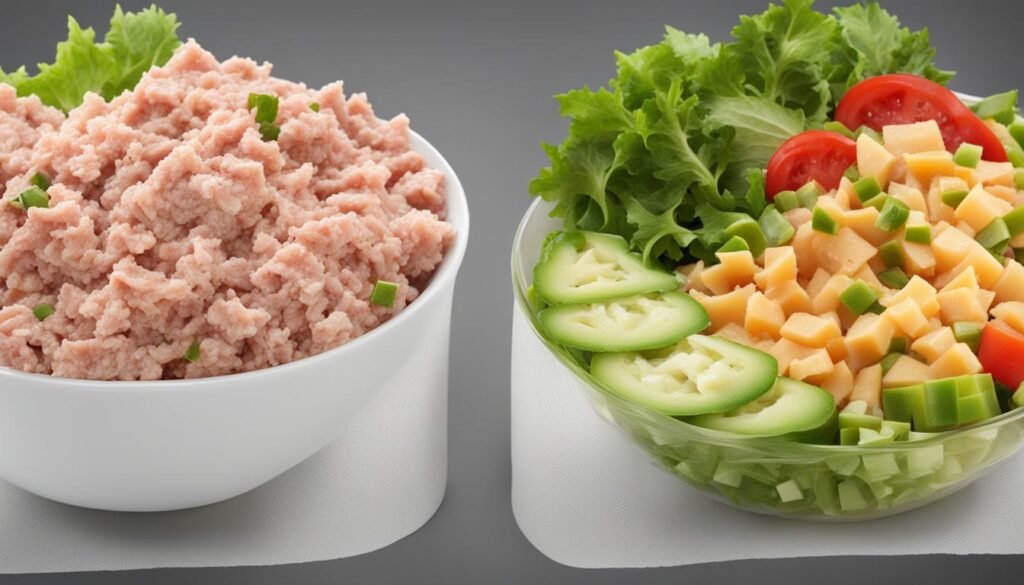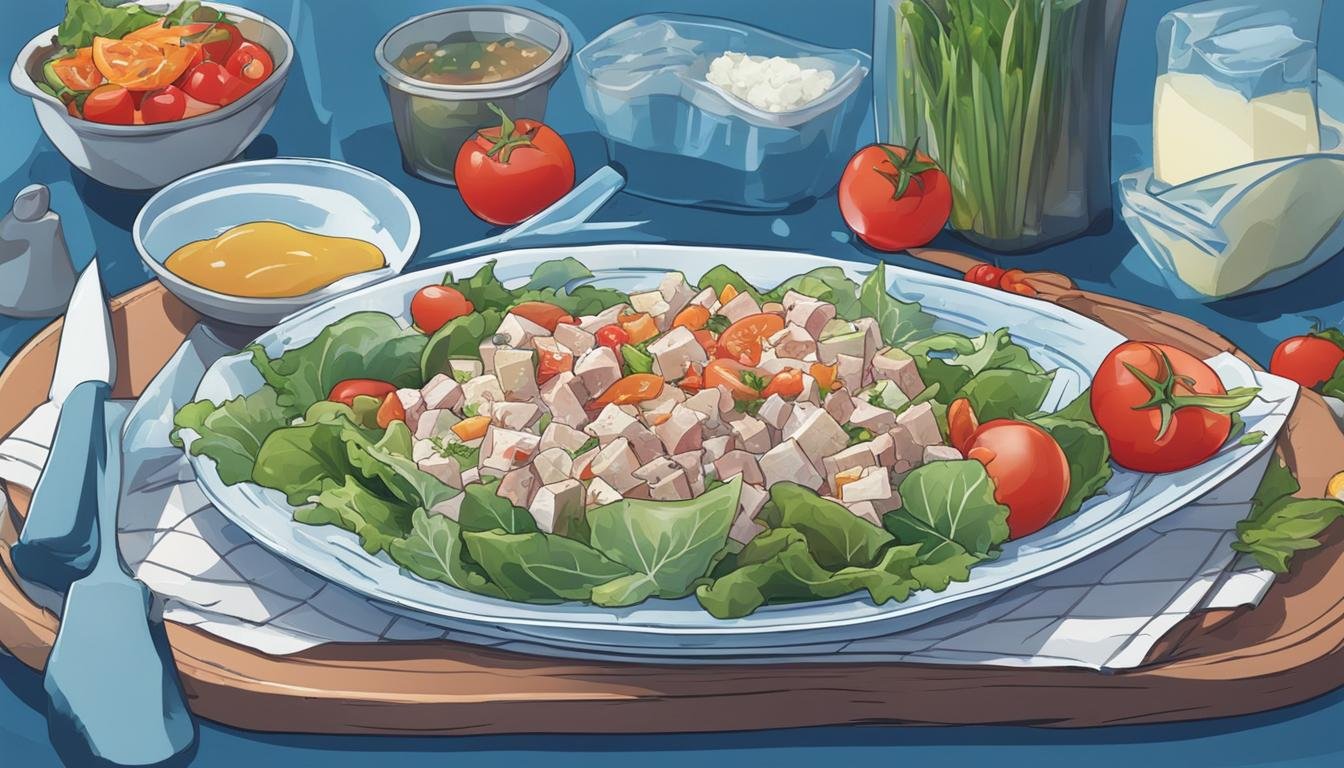Cold holding is a critical operation in the food industry for preserving the safety and quality of highly perishable foods. When it comes to tuna salad, it is important to adhere to specific temperature guidelines to ensure food safety. But what is the highest temperature allowed for cold-holding tuna salad?
The maximum cold-holding temperature for high-risk foods, including tuna salad, is 41°F (5°C) or below. This temperature limit is crucial to prevent the growth of harmful bacteria and pathogens, which can cause foodborne illnesses. By cold-holding tuna salad at or below 41°F, you can protect its quality and ensure it remains safe for consumption.
Key Takeaways:
- Cold-holding tuna salad at a temperature of 41°F (5°C) or below is essential for food safety.
- This temperature limit helps slow down the growth of harmful bacteria and pathogens.
- Maintaining the correct cold-holding temperature preserves the quality of tuna salad.
- Tuna salad is considered a high-risk food and falls under Time/Temperature Control for Safety (TCS) guidelines.
- Regular monitoring and compliance with food safety regulations are crucial in preventing foodborne illnesses.
Importance of the Cold-Holding Temperature in Handling Tuna Salad
Cold holding plays a crucial role in ensuring the safety and quality of tuna salad. By maintaining the correct cold-holding temperature, businesses can prevent the growth of harmful bacteria and pathogens, reducing the risk of foodborne illnesses. Cold-holding also helps to preserve the color, aroma, flavor, and texture of the tuna salad, ensuring its overall quality. This is especially important for businesses that handle high-risk foods like tuna salad, as any compromise in temperature control can lead to food safety issues and legal problems.
Proper cold-holding temperatures also optimize the shelf-life of tuna salad, minimizing food waste and maximizing profits. By keeping the temperature consistently at or below 41°F (5°C), businesses can extend the freshness of the tuna salad and avoid unnecessary spoilage. Compliance with food safety regulations is imperative, as it not only protects customer health but also upholds the reputation of the business.
Regular monitoring of the cold-holding temperature and training of food handlers are essential to maintaining the safety and quality of tuna salad. It is crucial to equip food establishments with suitable machines and equipment, such as refrigerators and coolers, to ensure consistent temperature control. By adhering to the guidelines and best practices for cold-holding tuna salad, businesses can safeguard the well-being of their customers and establish themselves as reputable providers of safe and high-quality food.

Summary:
Cold holding is of utmost importance in handling tuna salad to prevent the growth of harmful bacteria, maintain its quality, and comply with food safety regulations. By adhering to proper cold-holding temperatures and conducting regular monitoring, businesses can ensure the safety and freshness of their tuna salad, reduce food waste, and maintain customer trust.
Guidelines for Cold-Holding Tuna Salad
When it comes to cold-holding tuna salad, it’s crucial to follow the proper guidelines to ensure food safety and maintain quality. The recommended cold-holding temperature for tuna salad and other potentially hazardous foods is at or below 41°F (5°C). This temperature helps slow down the growth of harmful bacteria and pathogens, reducing the risk of foodborne illnesses.
To maintain the cold-holding temperature consistently, it’s important to use specialized machines and equipment like refrigerators and coolers. These appliances are designed to keep the temperature within the safe range, protecting the integrity of the tuna salad. Additionally, other Time/Temperature Control for Safety (TCS) foods have different recommended cold temperatures. For example, seafood should be cold-held at 38°F (3°C) while deli meats should be kept at 40°F (4°C).
It’s not just tuna salad that requires careful cold-holding. Other foods like pasta salad, salad bar items, green salads, salsas, cheese trays, egg salad sandwiches, slices of watermelon, and yogurt also need to be kept at or below 41°F to prevent bacterial growth and maintain their freshness. Regular temperature monitoring is essential to ensure compliance with food safety regulations and prevent any potential health risks.
In addition to monitoring temperatures, proper labeling of food items is crucial. Clearly labeling the date and time of preparation allows for better inventory management and helps identify any food items that may have exceeded their cold-holding time. This practice promotes food safety and avoids the risk of serving potentially contaminated food.
FAQ
What is the highest temperature allowed for cold-holding tuna salad?
The maximum cold-holding temperature for tuna salad is 41°F (5°C) or below.
What is the importance of the cold-holding temperature in handling tuna salad?
The cold-holding temperature is essential for preventing the growth of harmful bacteria and pathogens, ensuring food safety, and complying with food safety regulations.
What are the guidelines for cold-holding tuna salad?
Tuna salad should be cold-held at or below 41°F (5°C). It falls under the category of potentially hazardous foods, and other recommended cold temperatures for Time/Temperature Control for Safety (TCS) foods include 38°F (3°C) for seafood and 40°F (4°C) for deli meat. Regular temperature monitoring and proper labeling of food items are necessary to comply with food safety regulations.

